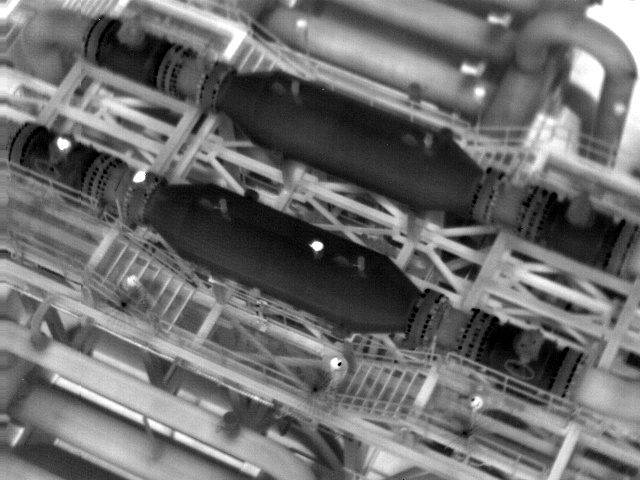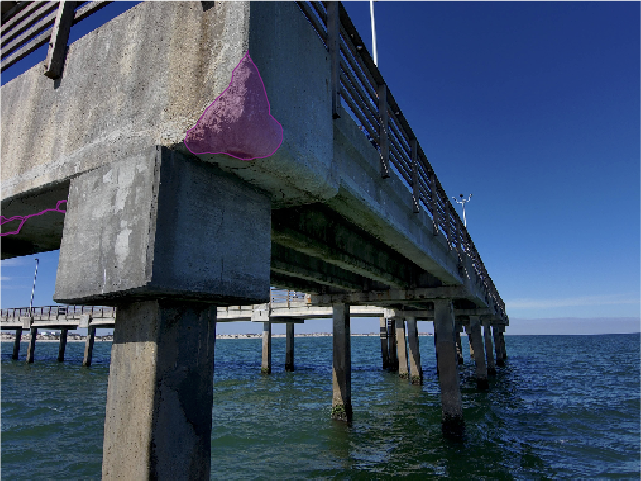The drone based NDT inspections provides a wide range of possibilities that take advantage of the mobility of the drone as well as the nondestructive nature of the tests. These tests can help the oil and gas companies to identify defects and reduce the rate of failures and unplanned shutdowns.
The nature and delicate nature of oil and gas industry requires close and careful monitoring of the systems such as oil rigs, offshore platforms, pipelines, refineries and more. However, the traditional destructive testing requires shutting down of the operations as well as the repair or replacement of the test area or component.
Benefits of drone based NDT inspections
The drone-based NDT inspections provide a cost effective, safe and faster solution for a majority of oil and gas the inspection needs, and does not require shutting down operations. Due to its simple and flexibility nature, the drone-based NDT inspections can be used to regularly monitor the integrity of the oil and infrastructure throughout its service life.
The following are the 5 reasons why the drone based NDT inspections are essential in the oil and gas industry.

1. Wide scope and capabilities
New technologies make it possible to equip the drones with a wide variety of sensors that perform different kinds of inspections.
The drones provide the mobility that allows the inspection of almost any facility regardless of its design or location.
Combining a drone with a suitable NDT technology increases the ability to perform a wide variety of inspections without destroying or changing the materials physical characteristics. This helps in identifying most of the surface and subsurface defects, and can be very useful in the oil and gas industry due to its delicate nature.
Some common tests include visual inspections, eddy current inspections, liquid penetrant inspections, ultrasonic inspections, thermal imaging, radiographic inspections and more. Each of these produces a set of results that aid in determining if components are still meeting the required standards and regulations.
2. Reduce inspection time and costs
The drone-based nondestructive testing allows easy, faster and inexpensive identification of flaws and defects on materials. This enables the maintenance department to carry out prompt repairs of replacements before problems occur.
Each of the technologies plays its individual role in reducing the costs and time it takes to perform a particular inspection. Further, testing without shutting down the operations means that the company will save time and avoid production losses.
Only a few workers, if any, need to go to the field to carry out the inspections. In addition, the drone based NDT inspections greatly reduce the need for large transport vehicles and helicopters to reach the remote areas. The technologies reduce the transport as well as the insurance costs and since the tests take less time, the company spends less on accommodation and allowances.
Drone based NDT inspections can quickly identify majority of defects and provide maintenance personnel with enough information that will allow them to fix problems and prevent leaks and pipeline damage.
3. Improving safety and minimizing accidents
Drone based inspections can significantly increase safety, reliability and the efficiency of the oil and gas infrastructure. In particular, they help to improve the on-site safety for the workers, hence avoiding accidents and injuries associated with traditional destructive testing.
The nondestructive inspections provide a safe and effective way of identifying defects that may lead to unsafe conditions, malfunctions or catastrophic failure. They prevent the accidents associated with test procedures as workers try to access difficult to reach areas and hostile environments. In addition, it minimizes the possibility of fires and other accidents may occur during the traditional destructive testing, such as those that involve welding or use open flames.
By identifying defects in good time, it allows the maintenance departments to fix the problems before problems occur. This in effect prevents failure which can lead to fires and accidents to workers as well as the people near the affected facility.
4. To improve facility reliability
Tampering with an equipment design during the destructive testing affects its reliability and sometimes its design life. If for example it requires cutting a certain part of metal, welding back the part results to some changes in the material structure. This will either weaken the welded or surrounding area - making parts of the welded area to respond differently to operational stresses.
The NDT inspection on the other hand, does not interfere with the structures and they continue retaining their initial design form.
The NDI is a great way of determining whether the structures meet certain environmental and safety requirements. Most of these tests, which are regular, can be carried out effortless with the drones. If they meet the accepted levels, the systems are allowed to continue operating, otherwise, repairs or replacements are performed to avoid issues that may lead to unplanned shutdowns, or disasters.
5. Comprehensive, accurate and reliable inspection data
Using a drone to access difficult areas, the NDT can then evaluate the structures and provide comprehensive data that would have taken several days using traditional access methods.
The drone based NDI inspections in the oil and gas industry has the ability to provide reliable and accurate test data on a variety of properties. The best thing is that the inspection process is usually repeatable and can be very useful when analyzing the effectiveness of any repairs.
Using location and other controls, the drones can take the same tests from the same point and angle over and over again. This helps the maintenance personnel to produce accurate results and eliminate errors that would arise from taking tests on different locations.
Conclusion
Combining drones with NDT brings in the advantages of drone mobility and flexibility, as well as the nondestructive nature of the inspection. This increases the safety, cost savings and does not introduce weak points on the materials on test.
When used correctly, the drone based NDT inspection can provide valuable information while retaining the structures intact. However, it requires an understanding of the task it is to perform and what kind of information it will look for. It is important to understand the capabilities as well as the limitations. In addition, it is critical to understand the relevant standards and specifications in relation to the test.
Tags
Oil and Gas



.png)
